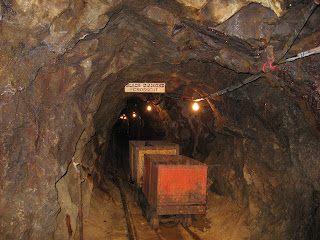Like all technology, things undergo a gradual and sometimes
a not so gradual change. When I think about
pens during my lifetime, I recall the fat ballpoints we were finally allowed to use when I reached junior high school.
And these were much different that the fine tipped Sharpies or gel pens
in use today.
 |
| Not my dad. High school boyfriend? |
I also remember when
pocket protectors were an everyday part of a business man’s wardrobe, not just the
nerds, but people who went to work every day wearing a suit, like my dad. Even when he wore a sports shirt, the pocket protector was in place and a pen handy. Then, if you consider all the different styles and brands of pens, the variety is immense.
The ball point pen itself was a huge leap forward, relying
on a ball bearing at the tip of the ink tube to keep the ink from spilling out.
It’s the pressure on the ball, which
releases the ink to flow out in what everyone hopes will be a smooth, even
flow. No blotters or blotting paper
needed after the ballpoint replaced metal nibs for writing. Ballpoint pens came into common use in
the 1950’s and are still in use today. (Gel pens use a type of roller tip,too, but the
consistency of the ink (the gel) is what makes the difference in how they
write.)
So what came in between dipping and rolling? I discovered it was the fountain pen which uses a nib, but also has a self-contained reservoir...no ink bottle needed. It worked on the science of capillary attraction to make work. And in case you've forgotten that science lesson, it is what allows liquid to flow into a narrow space...the little slit in the metal point.
 |
| 1855 |
 |
| 1890 |
 |
| 1911 |
So to back up a little, there were quill pens, then the invention of metal nibs used for dipping, and from there the fountain pen which was portable and carried around its own ink in a metal tube.
The fountain
pen, which was not very reliable to begin with, evolved to the point (no pun
intended) where a person could be relatively certain it could be used without ending up with a pool of black liquid
in a purse, a pocket, or on the paper being used.
In the 19th century, people were often judged by the quality of their penmanship, but it makes
me wonder if it became such a respected talent because of the skill it took to produce
a piece of writing that was not blurred, blotted, blobbed or blackened.
Judging by how often I use the delete key on
the computer, I would have been hard pressed to produce an error-free
letter. I still remember writing my first published book on a
typewriter (before White-out). I’d use the little correction papers, stick
them between the typewriter ribbon and keys to cover the mistake, retype so the
mistake looked white and blended with the paper (sort of), and re-type again with the correction paper removed, and if I did this step correctly, I could move on.
 |
| Ink blotter |
 |
| (My typewriter was actually a little newer. than this one.) |
And now, ahhhh, the computer keyboard. Who
could have imagined?
In the end, Miss Sternum did pull a fountain pen out of her
purse (1896) and the important paper was signed without any pooled ink. Or maybe I neglected to include that detail in the story.
In this case, it wasn't the most important thing. But it certainly was important that she didn't have to pull out her ink bottle and quill, uncork the bottle, dip the pen in and hand it over while the "bad" guy waited.
In this case, it wasn't the most important thing. But it certainly was important that she didn't have to pull out her ink bottle and quill, uncork the bottle, dip the pen in and hand it over while the "bad" guy waited.






